Break through the wall without breaking a head. H. 3
The participation of the Russian troops in the Naroch operation in March 1916 in the operation. The strike force of the Russian Western (2-th army) and Northern (part of the 5-th army) fronts included (including reserves and 14 corps of the 1 army) 12 corps. The number of groups - up to 460 thousand (including 375 thousand - in the composition of the main attack of the 2-th army) people.
The forces are large, but the underestimation of the artillery factor in the conduct of an offensive operation in a situation of positional war has seriously affected the effectiveness of the operation. Security artillery was weak - especially for the breakthrough of such a layered defense. The attackers were supported only up to 1000 light and 150 heavy guns - a ratio of no more than 2,5 guns per thousand bayonets. The artillery densities for the Russian front of this period were quite high (12-18, and in some places up to 35 guns per kilometer) on the shock sections of the Naroch operation, but much lower than those used on the French front - where the kilometer was up to 100 guns [Barsukov E. Artillery in providing a breakthrough. March operation of 1916 // Militaryhistorical magazine. 1940. No. 7. P. 26]. While the defensive positions of the Germans were not less, and sometimes stronger than in France.
Three groups of corps were attacking: 1) M. M. Pleshkova (1 th Siberian, 1 th and 27 th army, 7 th Equestrian); 2) L.-O. O. Sireliusa (34 and Army 4 and Siberian); 3) P.S. Balueva (5, 35, Army 36, Siberian 3).
Limited tactical success accompanied only the left-wing group of the 2 Army (thousands of people were captured up to 1,5, a howitzer, 18 machine guns and 36 mortars were captured). The strikes of the 13, 37 and 38 corps of the Northern Front and the 14 Corps of the 1 Army were unsuccessful.
Captured Germans. Baltic-Belarusian theater. Winter-spring 1916
One of the important reasons for the failure is the wrong artillery grouping. For example, at the site of the 1 Siberian Corps (main line), less than half of the heavy artillery of the MM Pleshkov group was used to prepare the attack of the formation. Of course, 76-mm guns could not fill the shortage of heavy artillery - their effectiveness in firing at the trenches was already below average - especially when the ground was not thawed. March 5 was a thick fog - he seriously obstructed the observation [Ibid. C. 33].
As a result, the wire obstacles of the Germans survived - which led to high losses of the Russian infantry. By the end of the operation, enemy barriers and trenches were destroyed in a number of sectors, but the dugouts were largely preserved. The communications flow was overwhelmed with German corpses - which also made it difficult for the Russian infantrymen to take action. Although there were no continuous passages in the wire fences, the infantry coped with the sharp wire. But the gunners of the group of M. M. Pleshkov could not destroy the German machine gun points that were in the forest. It was not possible to suppress the fire of enemy artillery - the latter’s position was not adequately identified due to the lack of aerial reconnaissance and high-quality observation posts. As a result, the Russian infantry could not stay in the captured trenches - it fell under the flank fire of machine-gunners and concentrated artillery fire located around the attacked area. Due to the correct location, the Russian artillery was not detected by the German batteries and did not suffer significant losses, while the losses of the Russian infantry were large [Ibid. C. 35].
The infantry operated in difficult tactical conditions. Thus, Colonel A. O. Grippenberg noted that receiving the order "to dig in the captured areas," parts stood knee-deep in water and ... sat on German corpses. We had to pile up the corpses of the dead Germans - because the trenches were filled with water. And in the evening the trenches began to freeze. The situation was aggravated by the presence of the wounded. But valiant Russian troops fought in such conditions not a day or two - but ten days [Ibid. C. 37].
N. E. Podorozhniy noted in relation to the attack of the 22 Infantry Division, which was rapidly and unceasingly attacking under the deadly crossfire of machine guns and enemy artillery - that the compound courageously sunk into the Germanic barbed obstacles - but could not overcome the barricades. Cut the wire slowly and under enemy fire - especially from the flanking areas (primarily the forest wedge) that caused the greatest losses to the advancing fire. [Podorozhny N. E. Naroch operation in March 1916, M., 1938. C. 78].
The situation was similar in the combat sectors of the Northern Front formations. The commander-5, V.I. Gurko, wrote that the battles of the armies were clearly demonstrated by the fact that an offensive in a positional war, conducted during periods of winter thaw or frost, in conditions of the Russian climate puts the advancing troops in an extremely unfavorable position. Moreover, the preparation of units and headquarters was still insufficient for conducting offensive operations in a situation of positional warfare. [Gurko V.I. War and revolution in Russia. Memoirs of the commander of the Western Front 1914 - 1917. M., 2007. C. 176].
The general recorded negative circumstances affecting the effectiveness of the operation — weak artillery (first of all, severe), the absence of surprise, and an area detrimental to an infantry attack. Heavy artillery arrived gradually and only in the amount of no more than 100 guns (and even then no more than the caliber of 152-mm). The preparation for the operation could be completed no earlier than at the end of March - it was believed that there would not be a thaw by that moment. The training was fixed by the enemy, who concentrated powerful artillery, supplied with ammunition in abundance (whereas the Russians saved every shell). Accordingly, artillery preparation was planned only for one day - with the expectation that before dark the infantry should capture the first line of enemy fortifications. Initially successful, the offensive was not developed - due to the lack of material resources and due to the difficulties of conducting an offensive operation in a winter period positional war. Thus, the land was frozen and, accordingly, the work of creating trenches during the offensive (under enemy fire) was almost impossible. Huge efforts were also demanded by the alteration of the captured German fortifications - for defense. The daytime frost gave way to a thaw (the nights were still frosty) - and the soldiers lying in the snow got wet through, while the clothes froze at night. This led to numerous frostbite of the limbs. [Ibid. C. 174-175].
A secret note on the implementation of operations on Strypa and Narochi (as applied to the 5 Army) and the fact that the shells arrived in small batches - and the troops, for fear of being left without shells, saved them. The most acutely lacking high-explosive shells for 76-mm field guns [Note on the execution of operations. C. 14]. Fixed this document and the fact that one of the reasons for the disruption of the operation on the Northern Front was frozen ground. [Ibid. C. 21].
To break through the deeply erected German defense in an environment of insufficient fire support and turn tactical success (where it was achieved) into operational, Russian troops failed: the broken through units, not supported in time, were met with counterattacks and a hail of hand grenades - and in most cases were forced to retreat. The passive stubbornness of the units under the disastrous fire of the German machine guns brought only great losses. It was very difficult to fasten on the frozen ground of the captured areas - although they built trenches of snow, and at night they brought sandbags from the rear [Ibid. C. 35]. The case was complicated by a lack of communications.
It should be noted that the success of the groups of M. M. Pleshkov (the positions of the 21-th army corps of the enemy were broken) and P. S. Baluev (the front of the enemy was also broken and the positions taken. Postavy) could not be developed due to the unsatisfactory maneuvering by the existing reserves - partly This was due to the ensuing thaw.
The German command, noting the stubbornness of the Russian troops in the fighting of the armies, reports on the critical position of its troops.
E. von Ludendorff noted that from 5 to 18 in March the position of the German 10 Army was critical - in March the Russians managed to win a very painful success for the Germans in the lake gorge, the strike west of Posta was only hard to reflect. The position of the German 8 Army and the Scholz Army Group was no less difficult. [Ludendorff E. My Memories of the War 1914 — 1918. M. - Mn., 2005. C. 209]. E. von Falkenhain noted the fact of a transfer to reinforce the attacked front of one division from the general reserve of the German Eastern Front - the latter was transferred from Baranavichy [E. Falkengain. High Command 1914 — 1916 in its most important decisions. M., 1923. C. 220].
If the Russian army could concentrate at the lake. Naroch same technical resources, which had the French in Champagne, and to carry out a simultaneous strike by them, then she could ensure a serious success.
The rate established the following main reasons for the failure of the Naroch operation:
1. Lack of thorough, extensively and comprehensively prepared preparation of the operation. The troops did not receive specific instructions about the tasks and methods of the field, and not the armchair training. The troops were not familiar with the area of operations - as they arrived there often just before the start of the operation. The army command often refused to take direct leadership of the breakthrough and transferred control to the hastily improvised group headquarters, some of whom had not even made a tactical assessment of the terrain and personal familiarization with the latter.
2. The inconsistency of the actions of artillery and infantry. The infantry often seized individual sections of enemy positions, but, finding themselves without artillery support later, was thrown back with heavy losses. The infantry support did not keep up - the latter were forced to move through the open area under the murderous artillery fire of the enemy (due to the lack of pre-equipped engineering-assault bridgeheads).
3. Artillery received impracticable tasks - but "senior artillery commanders did not have the courage to declare the" inconsistency of conditions "." Artillery tasks were set incorrectly.
4. Inappropriate was the choice of attack sites. The General Headquarters saw the main drawback in this area in the fact that “without special preparation” they tried to break through the fortifications of the enemy — moreover, by means of field combat, without the necessary approach to the fortified line of the enemy (also an indication of the absence of engineering assault bridgeheads). As a result, the advancing infantry chains were, in most cases, shot long before approaching the enemy wire.
The factor of barrage of artillery fire was underestimated - and it was he who could cover the Russian infantry that had broken through and reduce its losses. The significance of this fire can be seen in the fact that in the battles on the Jacobstadt front (front of the 5 Army) the German prisoner reported that if the Russians repeated their failed assault, the Germans would be powerless to give them fire resistance - due to the Russian barrage, the delivery of cartridges to their positions was stopped, and the arrows had no more than five cartridges for the rifle, and the machine guns were only empty ribbons.
The width of the breakthrough front was completely inadequate. And in narrow areas, the successfully advancing troops were under the influence of enemy fire, who shot through breakthrough areas from both flanks. Unable to gain a foothold, the troops suffered heavy losses.
The conditions of the terrain also had a great importance on the effectiveness of the operation - the terrain at the attacked site was a continuous swamp.
The commander of the German Eastern Front, Field Marshal P. von Hindenburg, noting the difficult conditions in which the Russian offensive was carried out, wrote that the melting of snow and thaw had turned the battlefield into a bottomless swamp.
Russian artillery, not having a sufficient number of positions, was forced to be far behind, and its maneuvering (especially of heavy artillery) was much more difficult. For the Russian army, the tactical method used by the Germans to deliberately abandon the most dangerous combat sectors was completely unexpected - they retreated to new positions equipped in the rear. As a result, Russian troops often did not have sufficient data on the entire fortified line of the enemy. The result of this “ignorance” was the situation when the artillery worked not only “for nothing”, but also “blindly”. It turned out a vicious circle. Not receiving artillery support, the infantry suffered increased losses.
The situation was aggravated by the fact that the terrain in the area of the attack was not equipped and the support of the battle line was openly under the enemy's artillery bombardment, “numb in the water and snow”.
Продолжение следует ...
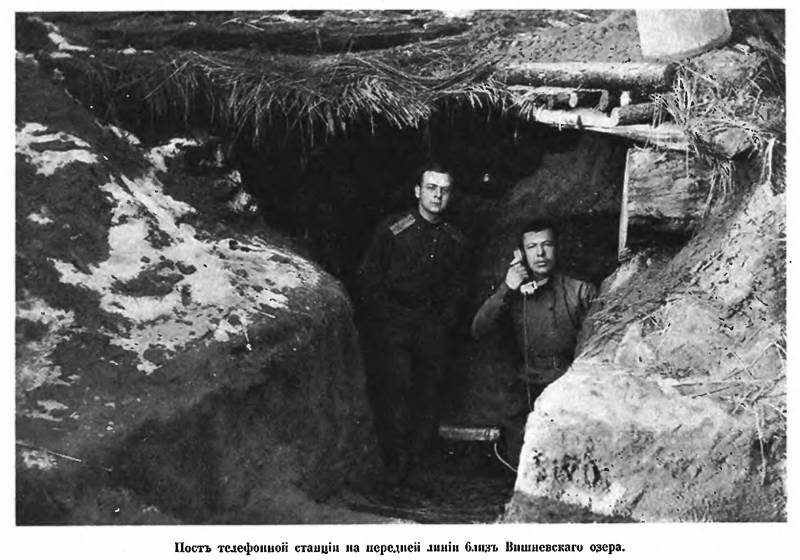
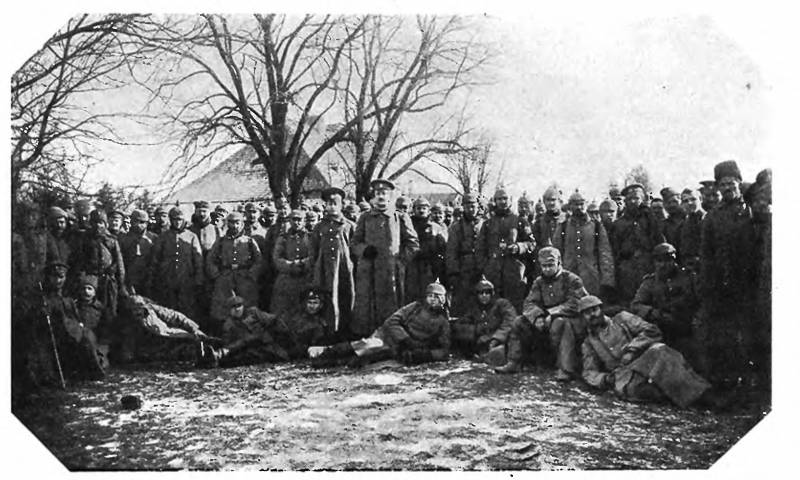
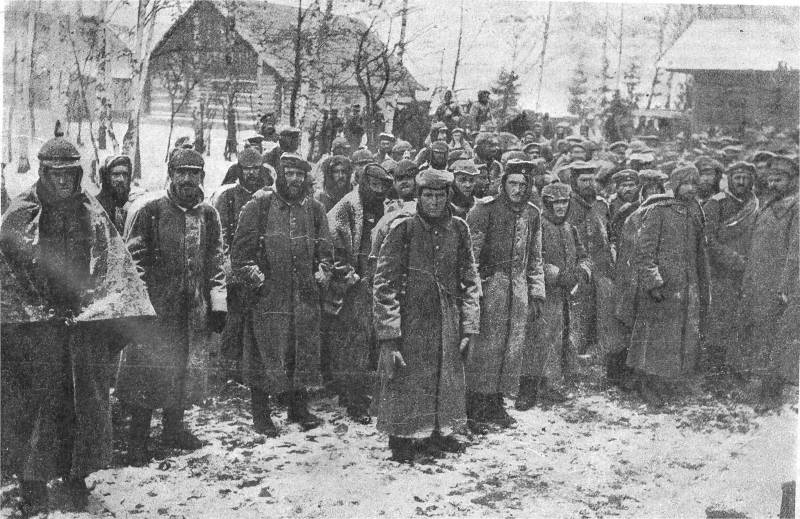
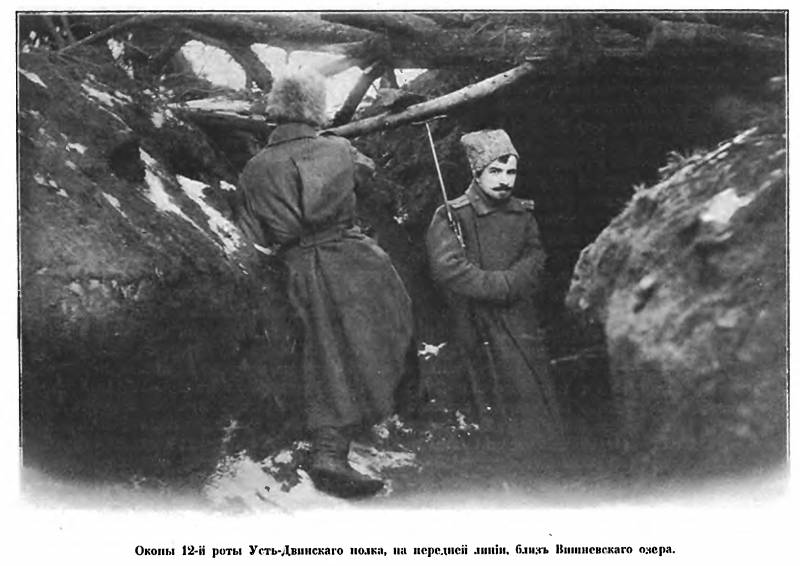
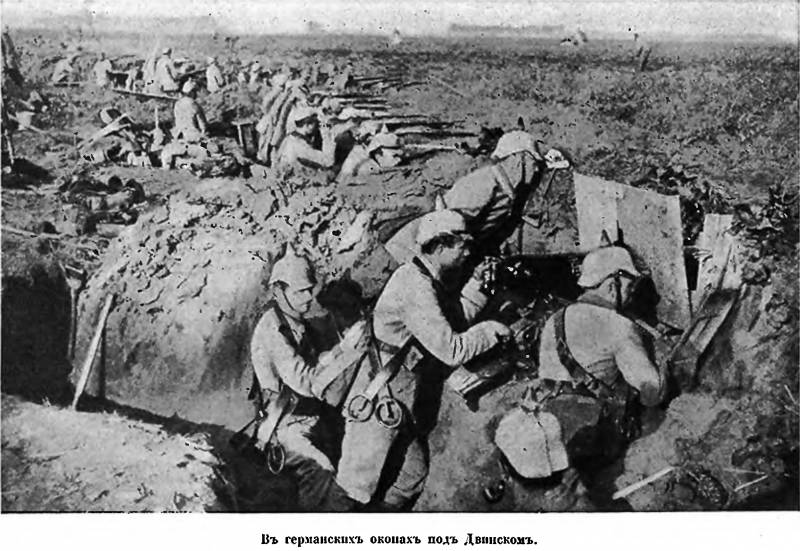
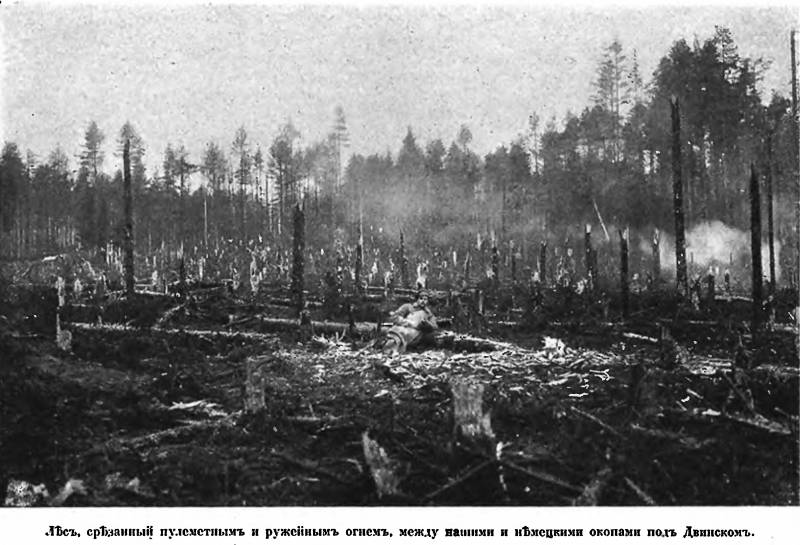
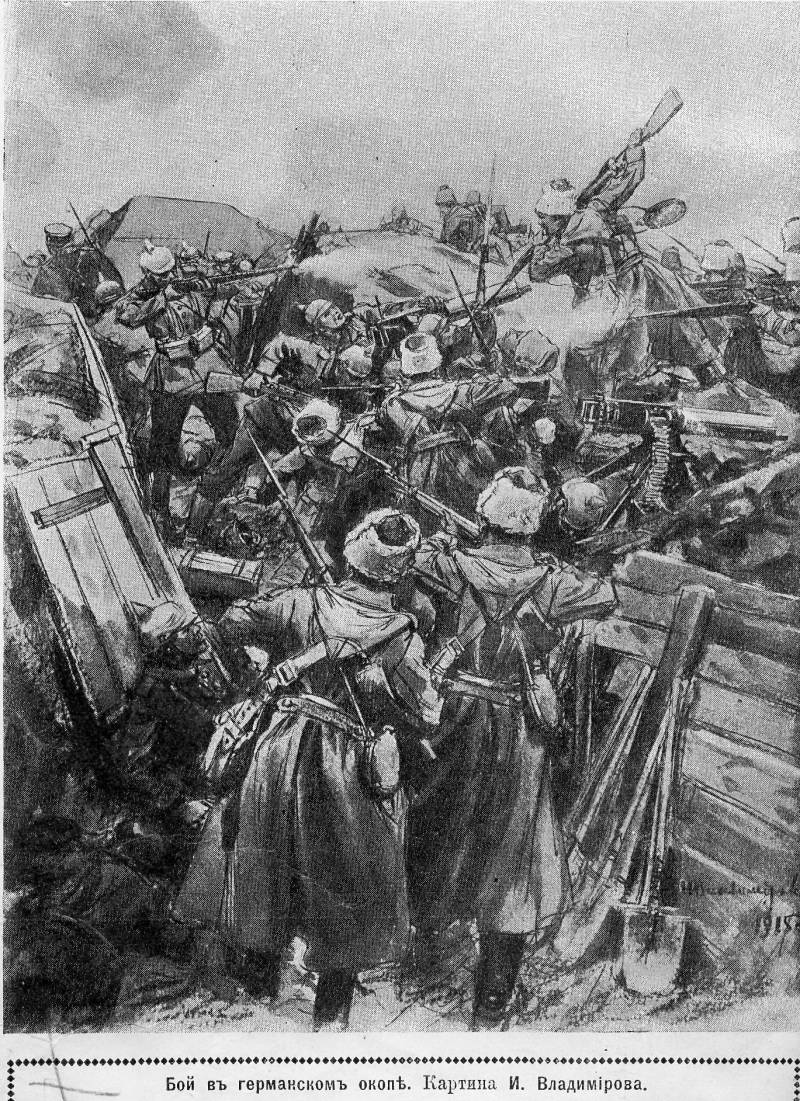
Information